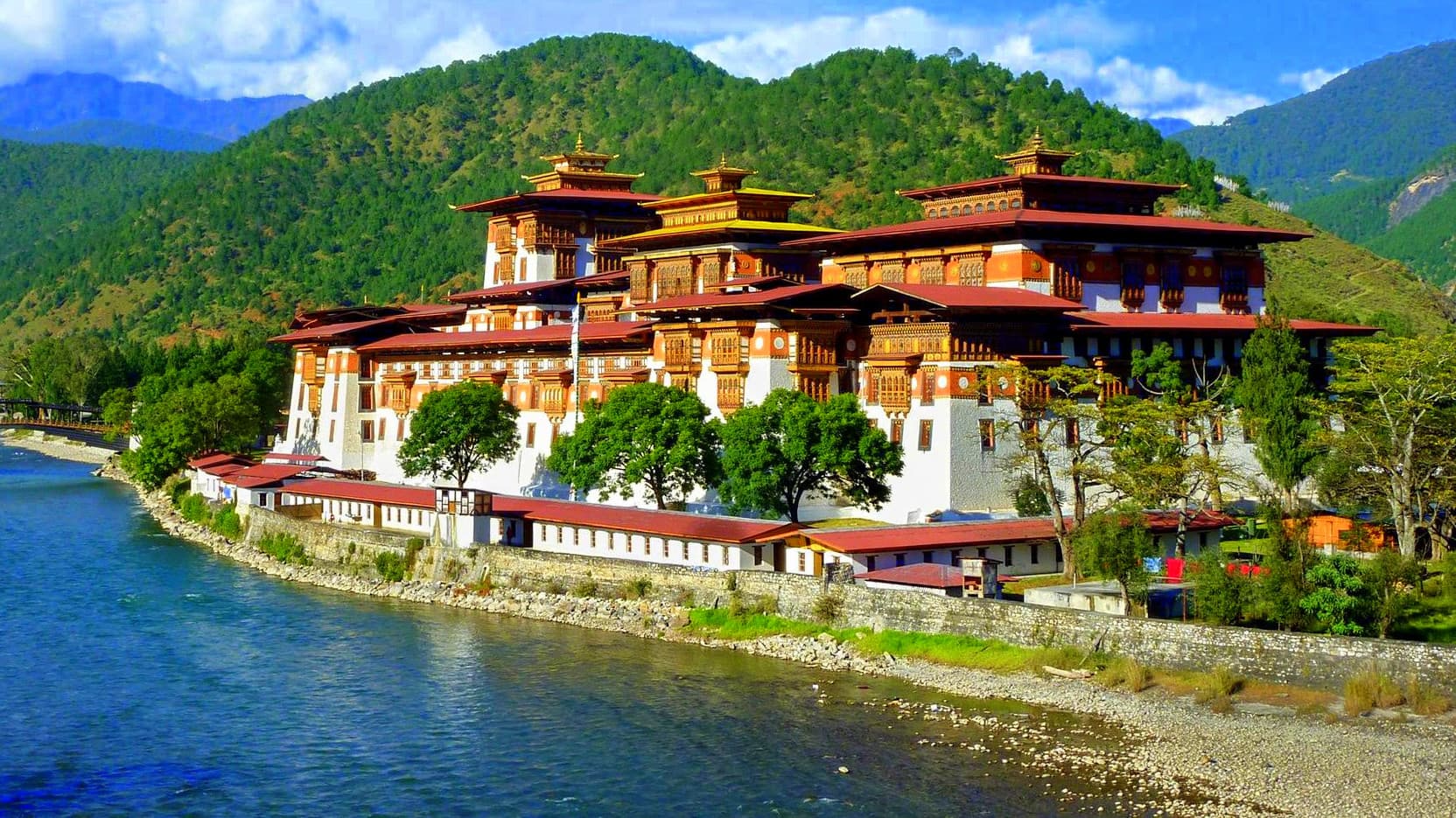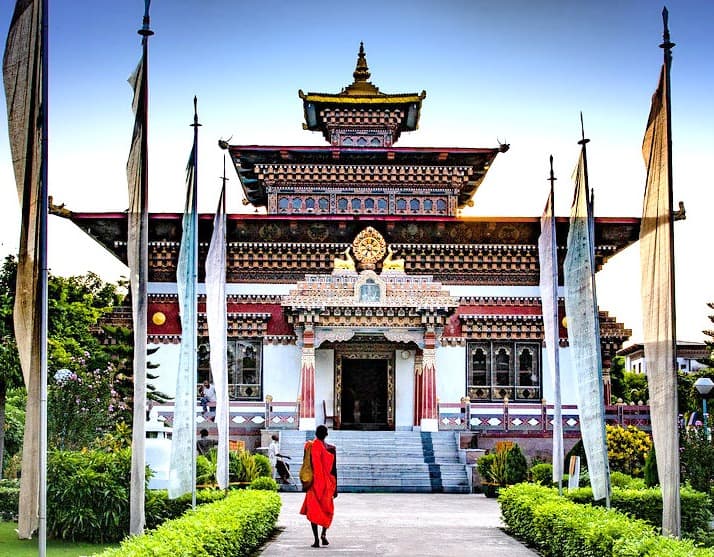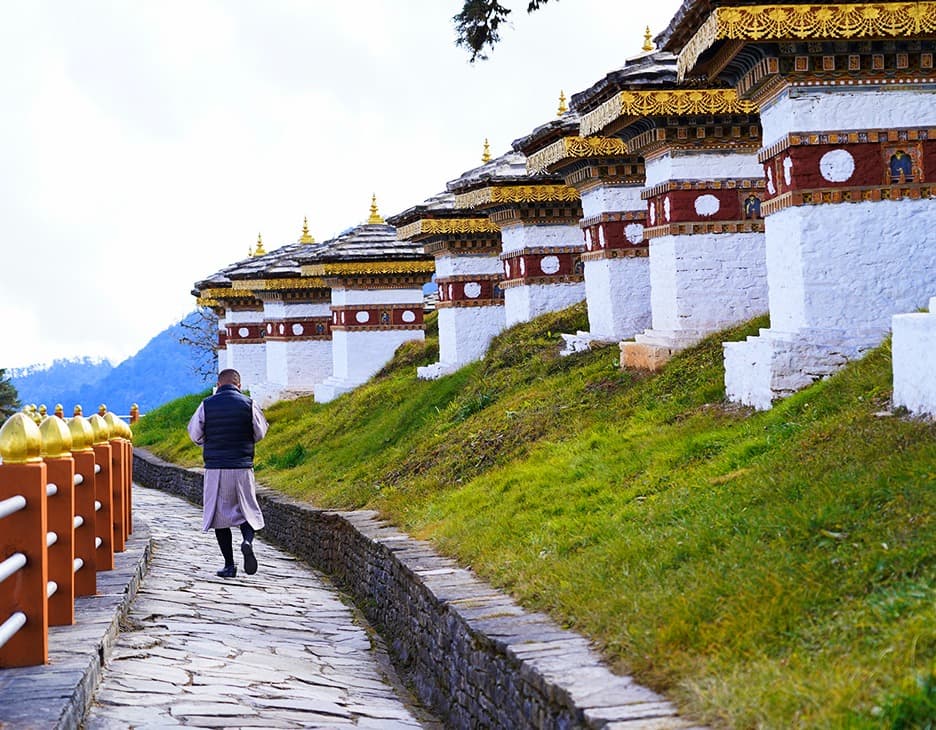- Paro Taktsang Monastery
- Punakha Dzong
- Tashichho Dzong
- Gangtey Monastery
- Rinpung Dzong
- Jambay Lhakhang
- Kyichu Lhakhang
- Chimi Lhakhang
- Tango Monastery
- Kurjey Lhakhang
- Best Time to Visit the Top Monasteries in Bhutan
- Essential Tips for Visiting the Top Monasteries in Bhutan
- FAQs of the Top Monasteries to Visit in Bhutan
Exploring the top monasteries to visit in Bhutan offers a unique opportunity to delve into the heart of the country's rich spiritual and cultural heritage. Nestled amidst the breathtaking landscapes of the Himalayas, these Bhutan monasteries are more than just religious sites; they are gateways to understanding the profound spirituality and traditions of the Bhutanese people. From the iconic Paro Taktsang Monastery perched on a cliffside to the majestic Punakha Dzong at the confluence of two rivers, each monastery is a testament to the country's architectural brilliance and religious devotion. As you set out on monastery tours in Bhutan, you will encounter the serene beauty and intricate artistry of Bhutan monastic architecture while experiencing the vibrant cultural festivals and rituals that define these Bhutan religious sites. Whether you seek to explore Bhutan monastery attractions or embark on spiritual journeys in Bhutan, visiting these famous Bhutan monasteries promises an enriching experience filled with awe and reverence.
When it comes to discovering the top monasteries to visit in Bhutan, Druk Holidays stands out as the premier travel company offering unparalleled expertise and service. With years of experience and a deep understanding of Bhutan’s spiritual and cultural heritage, we provide personalized tours that bring you closer to the heart of Bhutan monasteries. Our carefully curated itineraries ensure that you experience the most famous Bhutan monasteries, such as the awe-inspiring Paro Taktsang Monastery and the architecturally stunning Punakha Dzong while gaining insight into the vibrant traditions that make these sites unique. At Druk Holidays, our commitment to excellence and passion for sharing Bhutan’s rich history makes us the ideal choice for travelers seeking to explore Bhutan monastery attractions and embark on spiritual journeys in Bhutan. Let us guide you through the country’s Bhutan sacred sites, where you will experience the tranquility and beauty of Bhutan religious sites that have captivated visitors for centuries. Choose Druk Holidays for a transformative adventure through the best monasteries in Bhutan and create memories that will last a lifetime.
Paro Taktsang Monastery
Paro Taktsang Monastery, famously known as the Tiger’s Nest, is one of the most iconic and revered Bhutan monasteries. Perched precariously on a cliffside 900 meters above the Paro Valley, it offers some of the most breathtaking views in Bhutan.

- Legendary Significance: According to local legend, Guru Rinpoche (Padmasambhava) flew to this site on the back of a tigress to meditate and subdue a local demon. This miraculous event imbues the monastery with a deep spiritual aura, making it one of the famous Bhutan monasteries.
- Stunning Location: The monastery’s dramatic cliffside location provides spectacular panoramic views of the Paro Valley. The journey to the monastery involves a scenic trek, which adds to the experience and allows visitors to immerse themselves in the natural beauty of Bhutan.
- Architectural Marvel: The monastery complex consists of four temples and various other rooms. The intricate woodwork and traditional Bhutanese architecture are a testament to the skill and craftsmanship of Bhutanese builders. The design of the monastery harmonizes beautifully with the surrounding natural landscape.
- Cultural and Spiritual Significance: As one of the most important Bhutan spiritual sites, Paro Taktsang is a center of pilgrimage for Buddhists from around the world. The monastery hosts various religious ceremonies and festivals, attracting visitors seeking spiritual solace and insight.
- Visitor Experience: Reaching Paro Taktsang requires a moderate hike that takes about 2 to 3 hours. The trek is well worth the effort, offering an opportunity to experience the serene environment and engage in reflective contemplation. The trail passes through beautiful pine forests and offers glimpses of the monastery from various vantage points.
Paro Taktsang Monastery is not just a destination but a profound journey into Bhutan’s spiritual heart. It stands as a symbol of resilience, devotion, and the sublime beauty of Bhutan’s natural and cultural landscape. Visiting this iconic site provides a unique blend of adventure, spirituality, and awe-inspiring scenery, making it a must-see on any exploration of top Buddhist monasteries in Bhutan.
Punakha Dzong
Punakha Dzong, often referred to as the "Palace of Great Happiness," is one of the most majestic and historically significant Bhutan monasteries. Located at the confluence of the Pho Chhu and Mo Chhu rivers in Punakha, this grand fortress monastery is a highlight of any visit to Bhutan.
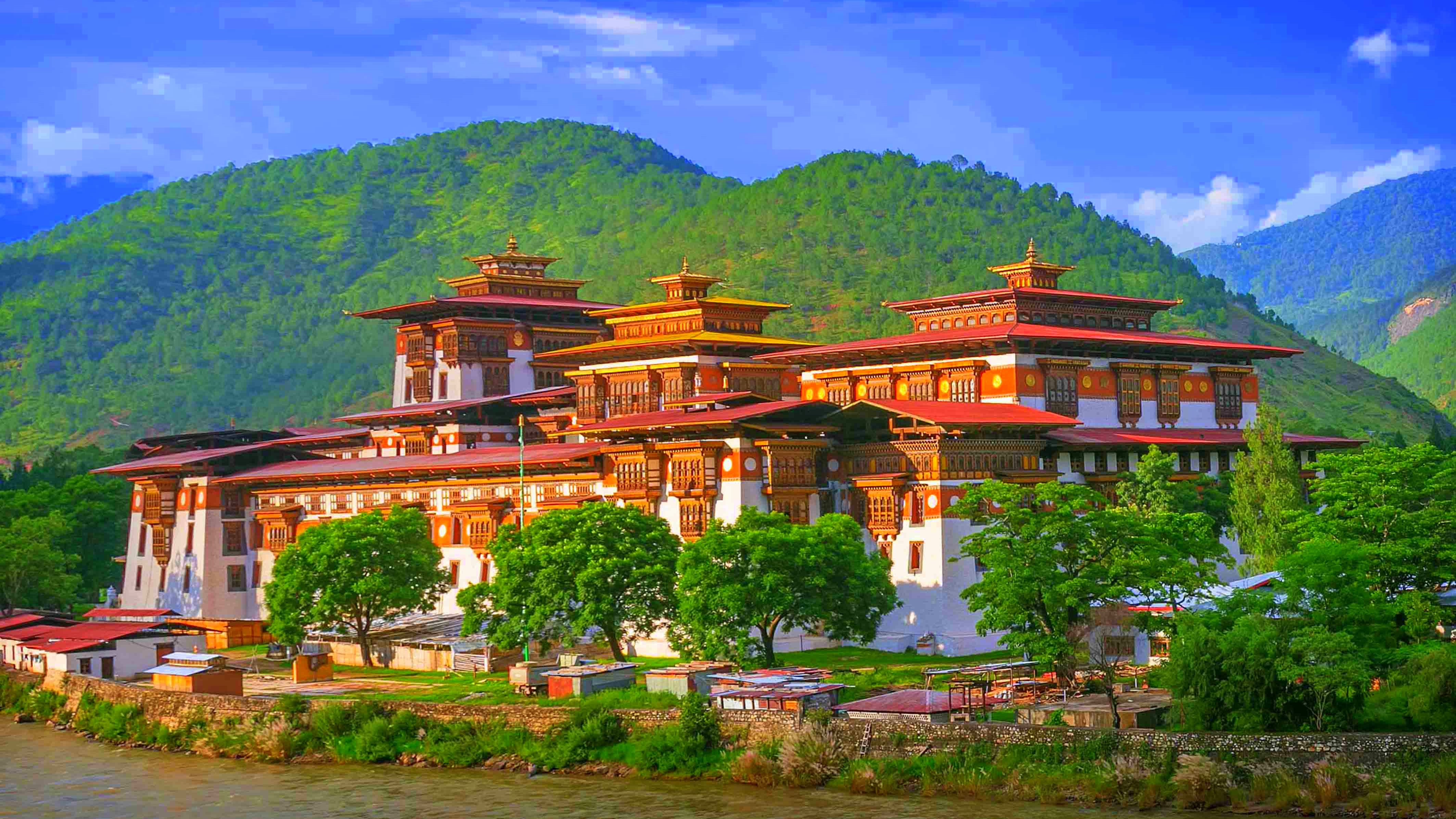
- Architectural Splendor: Punakha Dzong is renowned for its stunning Bhutan monastic architecture. The dzong’s elaborate woodwork, intricate murals, and grand courtyards exemplify the traditional Bhutanese building style. The fortress’s whitewashed walls and golden roofs are striking against the backdrop of the surrounding landscape.
- Historical Significance: Built in 1637 by Shabdrung Ngawang Namgyal, the founder of Bhutan’s unified state, the dzong played a crucial role in Bhutan’s history. It served as the country’s capital until 1955 and remains an important administrative and religious center. It also houses the sacred relics of Bhutan, including the remains of Shabdrung Ngawang Namgyal.
- Cultural Richness: The dzong hosts the annual Punakha Tshechu festival, one of Bhutan’s most vibrant and colorful celebrations. The festival features traditional dances, rituals, and processions, drawing visitors and locals alike to witness the rich cultural heritage of Bhutan.
- Scenic Location: The dzong’s strategic location at the confluence of the Pho Chhu and Mo Chhu rivers adds to its visual grandeur. Surrounded by lush terraced fields and rolling hills, the dzong is set against a picturesque landscape, providing stunning photo opportunities and a serene atmosphere.
- Visitor Experience: Access to the dzong is through a beautiful wooden bridge, adding to the sense of entering a historical realm. Inside, visitors can explore the richly decorated temples, courtyards, and prayer halls. The dzong's tranquil environment and historical ambiance make it a compelling destination for those interested in Bhutan’s religious and cultural heritage.
Punakha Dzong is a true gem among Bhutan cultural landmarks and one of the most popular Bhutan monasteries. Its architectural beauty, historical significance, and cultural vibrancy make it an essential stop for anyone interested in experiencing the grandeur and spirituality of Bhutan.
Tashichho Dzong
Tashichho Dzong is a prominent and historic Bhutan monastery located in the heart of Thimphu, the capital city of Bhutan. Known for its impressive architecture and significant role in Bhutan’s political and religious life, Tashichho Dzong is a key highlight for visitors exploring the country's rich cultural and spiritual heritage.
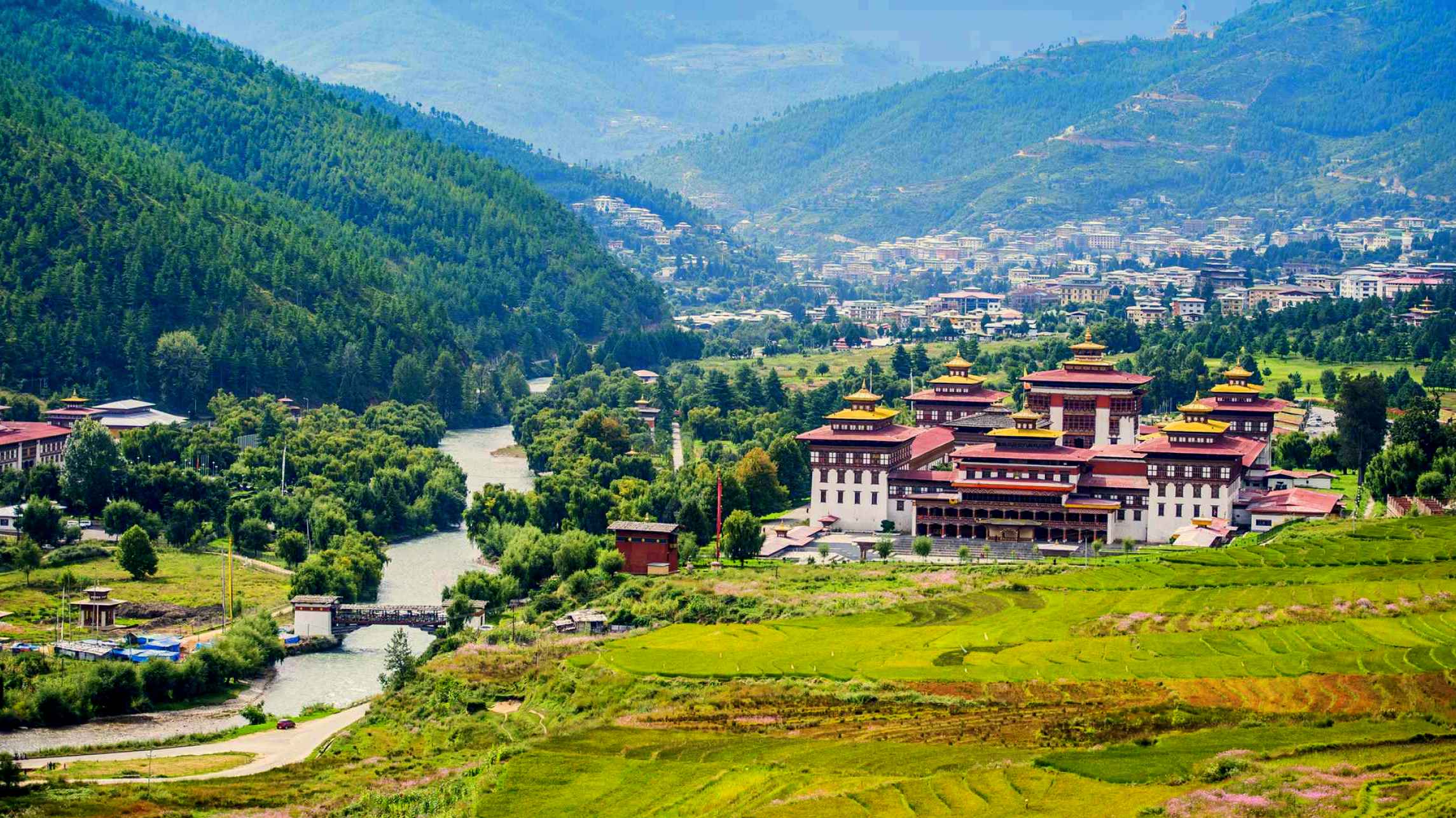
- Administrative and Religious Hub: Serving as the seat of Bhutan’s government and the summer residence of the monastic body, Tashichho Dzong plays a dual role. It houses the offices of the King and the central government, while also serving as an important center for Buddhist teachings and rituals.
- Architectural Masterpiece: The dzong exemplifies Bhutan monastic architecture with its grand, whitewashed walls, golden roofs, and intricate woodwork. The fortress-monastery features traditional Bhutanese design elements, including ornate prayer halls, spacious courtyards, and beautifully painted murals.
- Cultural Significance: Tashichho Dzong is central to many of Bhutan’s important religious and cultural events. It hosts the annual Thimphu Tshechu, a vibrant festival featuring traditional dances, music, and rituals that attract both locals and tourists. The festival is a vibrant display of Bhutanese culture and spirituality.
- Scenic Setting: Situated along the Wang Chhu River, the dzong offers picturesque views of the surrounding landscape. The serene environment and beautifully maintained gardens enhance the dzong's tranquil atmosphere, making it a pleasant spot for reflection and exploration.
- Visitor Experience: Visitors to Tashichho Dzong can explore its impressive courtyards, temples, and administrative buildings. While access to some areas may be restricted due to its role as a government and religious center, the dzong’s exterior and main areas provide a fascinating glimpse into Bhutan’s architectural and cultural traditions.
Tashichho Dzong stands as a testament to Bhutan’s rich heritage and ongoing tradition of integrating governance and spirituality. As one of the most significant Bhutan religious sites and Bhutan cultural landmarks, it offers a profound insight into the harmonious blend of political and religious life in Bhutan.
Gangtey Monastery
Gangtey Monastery, located in the picturesque Phobjikha Valley, is a significant Bhutan monastery known for its serene environment and spiritual importance. This Nyingma school monastery, founded in the 16th century, is an essential stop for those exploring Bhutan’s rich cultural and religious landscape.
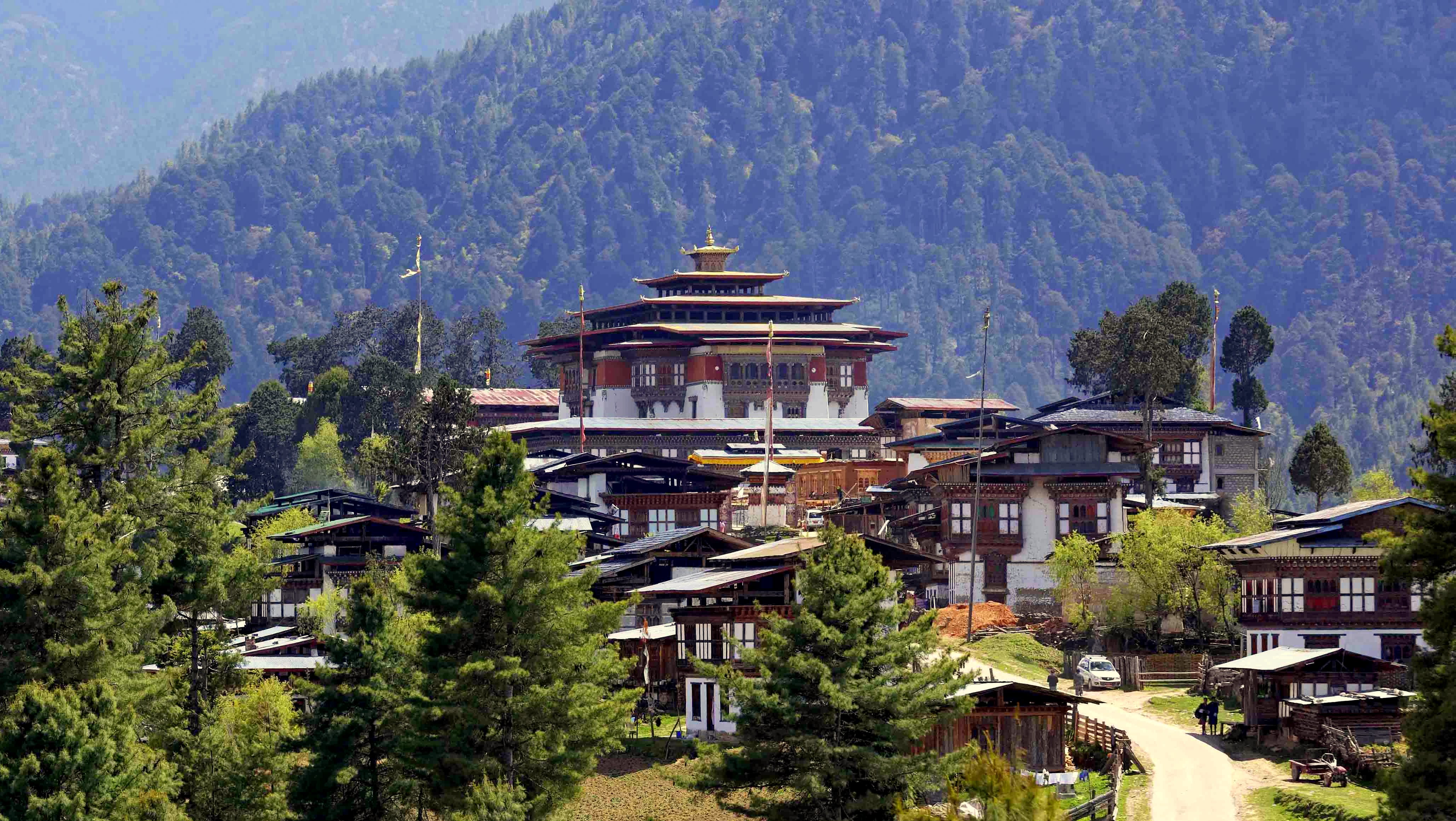
- Scenic Beauty: Nestled in the beautiful Phobjikha Valley, Gangtey Monastery offers stunning views of the surrounding landscape. The monastery’s location provides a panoramic perspective of the valley, known for its lush greenery and seasonal black-necked cranes. This setting enhances the monastery's tranquil atmosphere and makes it a perfect spot for reflection.
- Spiritual Significance: As an important center for the Nyingma tradition of Tibetan Buddhism, Gangtey Monastery is a vital spiritual hub. It houses sacred relics and texts and serves as a place for meditation and religious study. The monastery's role in preserving and promoting the Nyingma teachings is crucial to Bhutan’s spiritual heritage.
- Cultural Events: The monastery is renowned for hosting the annual Black-Necked Crane Festival, which celebrates the return of these rare birds to the valley. This festival includes traditional dances, rituals, and educational programs about the conservation of the black-necked crane, making it a vibrant cultural event.
- Architectural Features: The monastery features traditional Bhutan monastic architecture with its distinctive red, white, and gold colors. The design includes intricate wood carvings, beautiful murals, and spacious prayer halls, reflecting the classic Bhutanese architectural style.
- Visitor Experience: Visitors to Gangtey Monastery can explore its peaceful surroundings, participate in religious ceremonies, and enjoy the stunning views of the Phobjikha Valley. The monastery's serene environment and cultural significance offer a unique opportunity to engage with Bhutanese spiritual practices and natural beauty.
Gangtey Monastery is a prominent example of Bhutan spiritual sites and Bhutan cultural landmarks. Its combination of natural beauty, spiritual depth, and cultural richness makes it a must-visit destination for those seeking to experience the heart of Bhutan’s religious and cultural heritage.
Rinpung Dzong
Rinpung Dzong, also known as the “Fortress on a Heap of Jewels,” is a majestic Bhutan monastery located in the Paro Valley. Renowned for its architectural splendor and historical importance, this dzong is a key highlight for anyone exploring Bhutan's rich cultural and religious landscape.
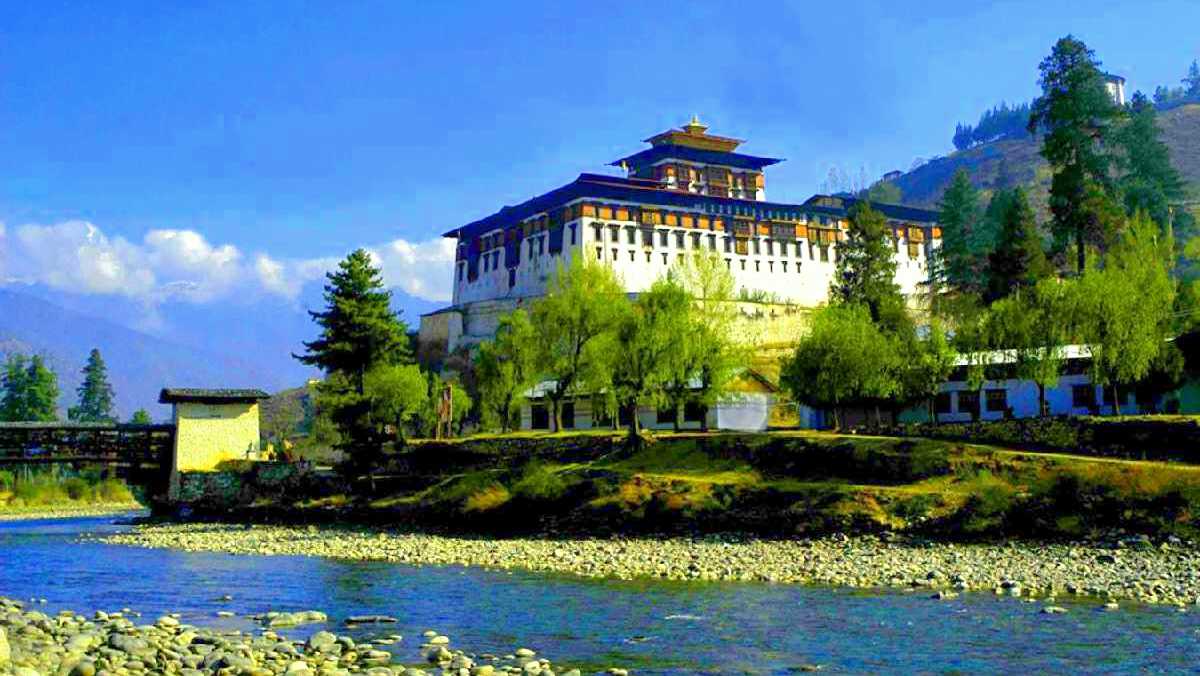
- Architectural Grandeur: Rinpung Dzong is celebrated for its impressive Bhutan monastic architecture. The fortress features traditional Bhutanese design elements, including towering walls, elaborate woodwork, and colorful murals. Its strategic location on a hilltop provides stunning views of the Paro Valley and the surrounding landscape.
- Historical Significance: Built in the 15th century by Shabdrung Ngawang Namgyal, the founder of Bhutan’s unified state, Rinpung Dzong has played a crucial role in Bhutan’s history. It served as a vital administrative center and was instrumental in the establishment of Bhutanese governance and religious practice.
- Cultural Importance: The dzong is central to the annual Paro Tsechu festival, a vibrant celebration that features traditional Bhutanese dances, music, and rituals. The festival, held in the dzong’s courtyards, draws locals and tourists alike, offering a vivid display of Bhutanese culture and spiritual traditions.
- Religious Significance: As a prominent Bhutan religious site, Rinpung Dzong houses several important temples and prayer halls. It serves as a center for religious activities and practices, including various ceremonies and teachings that are integral to Bhutanese Buddhism.
- Visitor Experience: Visitors to Rinpung Dzong can explore its grand courtyards, richly decorated temples, and ancient artifacts. The dzong’s serene environment and historical ambiance provide a unique opportunity to immerse oneself in Bhutan’s spiritual and cultural heritage.
Rinpung Dzong is a testament to Bhutan’s architectural brilliance and historical depth. As one of the popular Bhutan monasteries and a key Bhutan cultural landmark, it offers an enriching experience that combines stunning architecture, historical significance, and vibrant cultural traditions.
Jambay Lhakhang
Jambay Lhakhang is one of Bhutan's oldest and most revered temples, located in the Bumthang Valley. Known for its historical significance and spiritual ambiance, this Bhutan monastery holds a special place in the country’s cultural and religious landscape.

- Historical Importance: Jambay Lhakhang was built in the 7th century by Tibetan King Songtsen Gampo. It is one of 108 temples constructed to subdue a demoness believed to be causing chaos in the region. This deep historical connection makes it a significant site for understanding Bhutan’s early Buddhist history.
- Architectural Features: The temple complex showcases traditional Bhutan monastic architecture with its distinctive wooden windows, intricate carvings, and colorful frescoes. The layout and design of the temple reflect classic Bhutanese construction styles and offer insight into ancient religious practices.
- Cultural Festivals: Jambay Lhakhang is renowned for hosting the annual Jambay Lhakhang Drup festival. This vibrant festival includes traditional Bhutanese dances, rituals, and ceremonies that celebrate the temple’s history and spiritual significance. The festival attracts visitors and locals, providing a lively display of Bhutanese culture and tradition.
- Spiritual Significance: As a Bhutan spiritual site, Jambay Lhakhang serves as a center for religious ceremonies and practices. Its role in Bhutanese Buddhism is underscored by its association with important figures and events in the country’s religious history.
- Visitor Experience: Visitors to Jambay Lhakhang can explore its historical and architectural features while participating in or observing various religious rituals and festivals. The temple’s serene setting and historical depth offer a meaningful experience for those interested in Bhutan’s spiritual heritage.
Jambay Lhakhang stands as a testament to Bhutan’s ancient religious traditions and architectural excellence. As one of the must-see monasteries in Bhutan, it offers an enriching journey into the country’s spiritual and cultural past, making it a must-visit destination for anyone exploring Bhutan's historic and sacred sites.
Kyichu Lhakhang
Kyichu Lhakhang is one of Bhutan's most sacred and historically significant temples, located in the Paro Valley. As one of the oldest Bhutan monasteries, it holds a special place in the country's spiritual and cultural heritage.
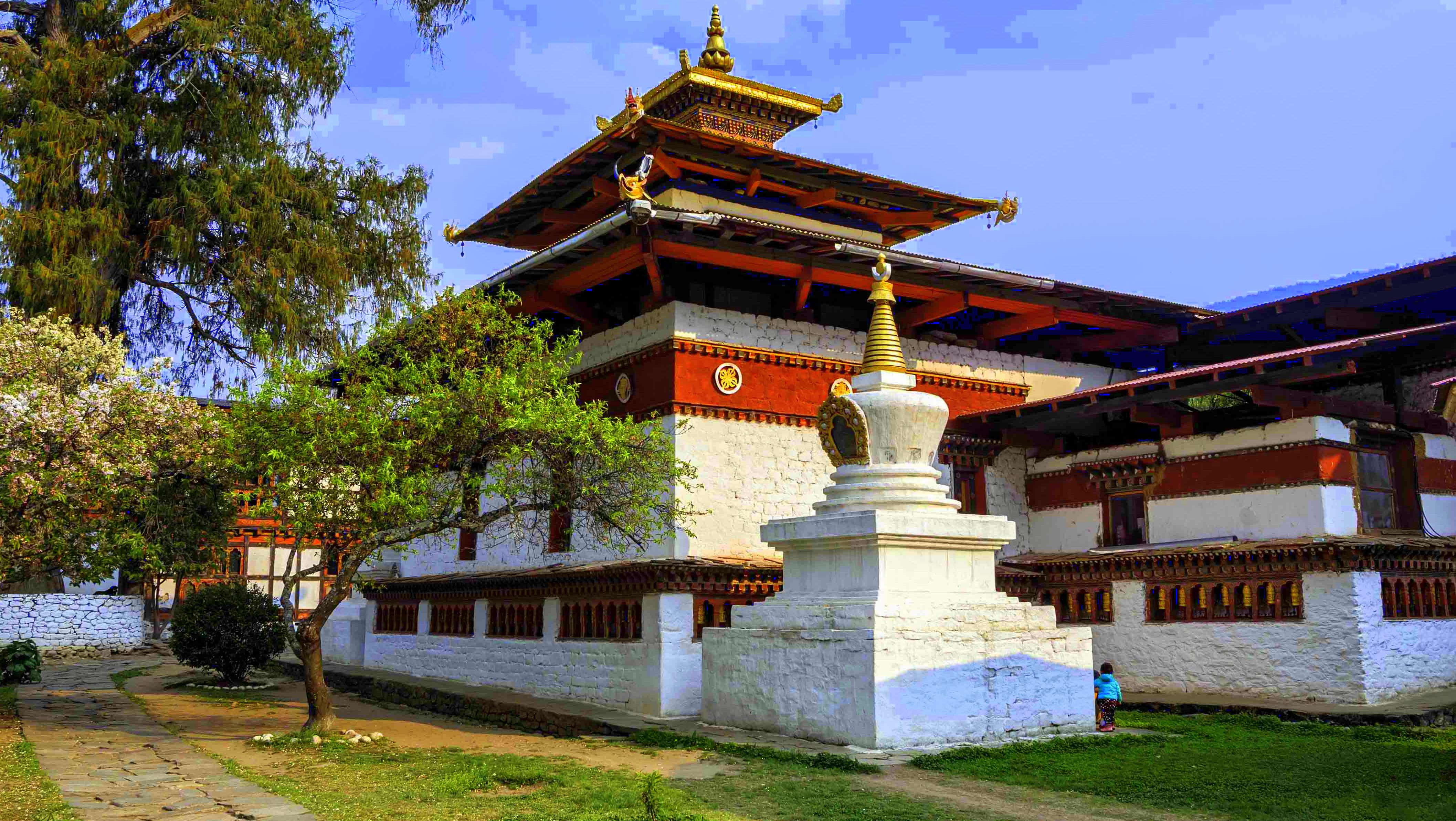
- Ancient Origins: Kyichu Lhakhang was built in the 7th century by Tibetan King Songtsen Gampo, as part of a mission to subdue a demoness that was said to be obstructing the spread of Buddhism in the region. The temple is one of the 108 temples constructed by the king, making it an important historical site in Bhutan.
- Architectural Charm: The temple showcases traditional Bhutan monastic architecture, with its distinctive orange and white walls, intricate woodwork, and beautiful murals. The design reflects classic Bhutanese aesthetics, offering a glimpse into the country's architectural heritage.
- Spiritual Significance: Kyichu Lhakhang is considered one of Bhutan’s most important Bhutan spiritual sites. It is believed to house a statue of the Buddha and other sacred relics, making it a revered location for religious ceremonies and pilgrimage.
- Cultural Relevance: The temple’s serene environment and historical significance make it a focal point for visitors interested in Bhutanese culture and religion. Its role in preserving and promoting Bhutanese spiritual practices is central to its cultural importance.
- Visitor Experience: Visitors to Kyichu Lhakhang can explore its tranquil surroundings, participate in religious ceremonies, and admire the temple’s architectural beauty. The site offers a peaceful atmosphere for reflection and a deeper understanding of Bhutanese spirituality.
Kyichu Lhakhang is a cherished landmark in Bhutan’s spiritual and cultural landscape. As one of the must-see monasteries in Bhutan, it provides a profound connection to the country’s ancient religious traditions and architectural heritage. Its historical depth and serene setting make it an essential destination for anyone exploring Bhutan’s sacred sites.
Chimi Lhakhang
Chimi Lhakhang, also known as the Fertility Temple, is a renowned Bhutan monastery situated in the Punakha Valley. This unique temple is celebrated for its distinctive association with fertility and its vibrant cultural heritage.

- Unique Fertility Significance: Chimi Lhakhang is famously known as the Fertility Temple, dedicated to Drukpa Kunley, the “Divine Madman” or “Mad Saint.” Drukpa Kunley was a revered Buddhist saint known for his unconventional methods and playful behavior. The temple is a popular pilgrimage site for couples seeking blessings for fertility, making it one of the most distinctive Bhutan spiritual sites.
- Architectural Features: The temple showcases traditional Bhutan monastic architecture with its simple yet elegant design. The structure features typical Bhutanese elements such as ornate woodwork and colorful murals, blending harmoniously with the surrounding landscape.
- Cultural and Historical Importance: Established in the 15th century by the great-grandfather of the current Je Khenpo (chief abbot) of Bhutan, Chimi Lhakhang is a key part of Bhutan’s cultural and spiritual heritage. The temple’s association with Drukpa Kunley’s unconventional teachings adds a unique cultural layer to its historical significance.
- Scenic Location: Located on a hilltop in the Punakha Valley, the temple offers picturesque views of the surrounding countryside. The journey to the temple involves a pleasant walk through fields and rural scenery, enhancing the overall visitor experience.
- Visitor Experience: Visitors to Chimi Lhakhang can participate in rituals and receive blessings for fertility from the resident monks. The temple’s welcoming atmosphere and the playful legends associated with it provide a memorable experience for those interested in Bhutanese spirituality and culture.
Chimi Lhakhang stands out as one of Bhutan’s most unique and culturally rich popular Bhutan monasteries. Its blend of spiritual significance, historical depth, and cultural vibrancy makes it an essential stop for anyone exploring Bhutan’s diverse religious and cultural landscape.
Tango Monastery
Tango Monastery is a significant Bhutan monastery located just outside Thimphu, the capital of Bhutan. Renowned for its spiritual significance and historical depth, Tango Monastery offers a unique glimpse into Bhutanese Buddhism and monastic life.
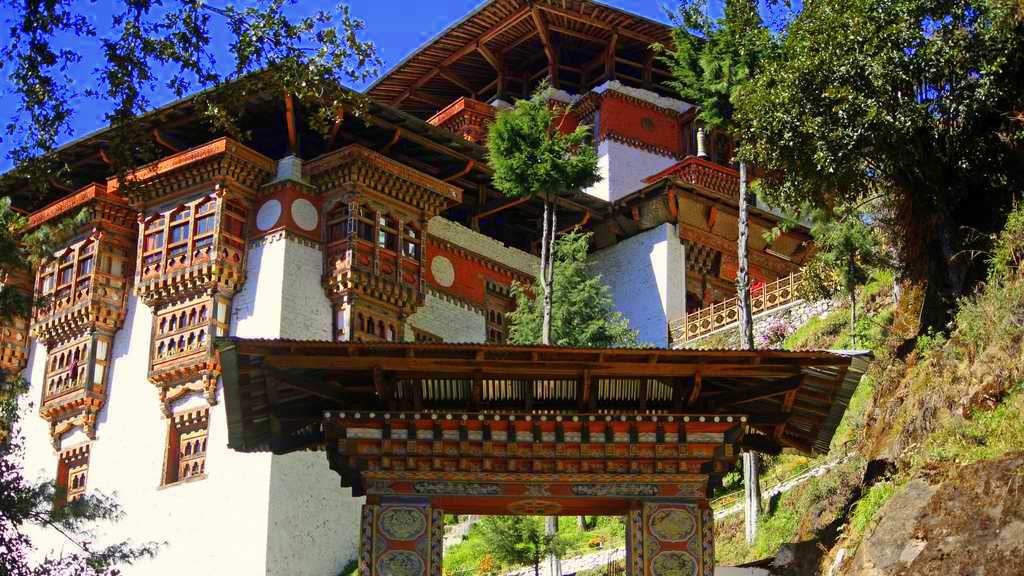
- Historical and Spiritual Importance: Founded in the 12th century by the Tibetan lama Phajo Drukgom Shigpo, Tango Monastery is a key center for the Drukpa Kagyu school of Tibetan Buddhism. It is closely associated with the famous Buddhist teacher and founder of Bhutanese Buddhism, Guru Rinpoche. The monastery’s historical role in promoting and preserving Bhutanese Buddhism adds to its spiritual significance.
- Architectural Beauty: The monastery features traditional Bhutan monastic architecture, with its classic white walls, intricate wood carvings, and richly decorated interiors. The layout of the monastery includes several temples, prayer halls, and living quarters, all designed in accordance with Bhutanese architectural principles.
- Educational and Monastic Center: Tango Monastery serves as a center for higher Buddhist learning and meditation. It is a prominent training ground for monks and students of Buddhist philosophy and practice. The monastery offers an opportunity for visitors to observe the monastic lifestyle and engage with Buddhist teachings.
- Scenic Setting: Located on a hilltop overlooking Thimphu, the monastery provides stunning views of the surrounding mountains and valleys. The trek to the monastery, which takes about an hour, passes through beautiful pine forests and offers a peaceful retreat from the city’s hustle and bustle.
- Visitor Experience: Visitors to Tango Monastery can explore its serene environment, participate in religious ceremonies, and enjoy the scenic beauty of the area. The monastery’s tranquil setting and rich spiritual atmosphere offer a meaningful experience for those interested in Bhutanese Buddhism and culture.
Tango Monastery is a vital part of Bhutan’s spiritual and cultural heritage. As one of the top Buddhist monasteries in Bhutan, it provides an enriching experience that combines historical significance, architectural beauty, and a deep connection to Bhutanese Buddhist practices.
Kurjey Lhakhang
Kurjey Lhakhang is a significant Bhutan monastery located in the Bumthang Valley, one of Bhutan’s most spiritually and culturally rich regions. Known for its deep religious significance and stunning setting, Kurjey Lhakhang is a prominent destination for visitors interested in Bhutanese spirituality and history.

- Sacred Site: Kurjey Lhakhang is renowned for its association with Guru Rinpoche (Padmasambhava), who is said to have left an imprint of his body on a rock within the temple. This sacred site is an important pilgrimage destination for Buddhists seeking blessings and spiritual connection. The rock with the imprint is enshrined in one of the temple’s main structures.
- Architectural Features: The temple complex features traditional Bhutan monastic architecture, with its characteristic white walls, golden roofs, and intricate wood carvings. The monastery comprises three main temples, each adorned with beautiful murals, religious artifacts, and intricate carvings, reflecting the rich cultural and artistic heritage of Bhutan.
- Historical Significance: The current structure of Kurjey Lhakhang was established in the 17th century by the Third Desi, Chokey Dorji, to commemorate Guru Rinpoche's visit. The monastery’s history is deeply intertwined with Bhutan’s religious traditions and royal lineage, adding to its cultural importance.
- Scenic Location: Located amidst lush pine forests and surrounded by picturesque landscapes, Kurjey Lhakhang offers a serene environment for meditation and reflection. The beautiful natural setting enhances the spiritual atmosphere of the monastery.
- Visitor Experience: Visitors to Kurjey Lhakhang can explore its sacred sites, including the rock with Guru Rinpoche’s imprint, and participate in various religious ceremonies. The monastery’s tranquil setting and historical depth provide a meaningful experience for those interested in Bhutanese spirituality and culture.
Kurjey Lhakhang is a vital part of Bhutan’s spiritual and cultural landscape. As one of the must-see monasteries in Bhutan, it offers an enriching experience that combines profound religious significance, stunning architecture, and a beautiful natural setting.
Best Time to Visit the Top Monasteries in Bhutan
To fully appreciate the top monasteries in Bhutan, it’s important to consider the best times to visit, taking into account weather conditions, cultural events, and personal preferences. Here’s a guide to help you choose the optimal time for your visit to Bhutan’s most revered Bhutan monasteries:
Autumn (September to November)
- Weather: Autumn is one of the best times to visit Bhutan. The weather is generally clear and pleasant, with cool temperatures and low humidity. This makes it ideal for trekking and exploring the monasteries.
- Events: Many important festivals and cultural events occur during this season. For example, the Paro Tsechu and Thimphu Tsechu festivals are held in September and October, respectively. These festivals offer a vibrant display of traditional Bhutanese dances, music, and rituals, providing a unique opportunity to experience Bhutanese culture.
Spring (March to May)
- Weather: Spring brings mild temperatures and blooming flowers, enhancing the beauty of the natural landscape. It’s a good time for outdoor activities and exploring the monasteries.
- Events: Spring is also a popular time for various festivals, including the Jambay Lhakhang Drup in Bumthang. This festival is known for its colorful performances and rituals, adding to the cultural experience of your visit.
Winter (December to February)
- Weather: Winter in Bhutan can be cold, especially in the higher altitudes, but it’s also a time of clear skies and crisp air. Lower valleys like Paro and Thimphu are relatively mild.
- Events: While winter is less crowded with tourists, it’s a great time to visit if you prefer fewer crowds. Some monasteries may have quieter periods, allowing for a more reflective experience.
Summer (June to August)
- Weather: Summer is the monsoon season in Bhutan, bringing heavy rains and occasional landslides. This can make travel challenging, especially in remote areas.
- Events: Despite the weather, summer is a time when the countryside is lush and green. It’s a quieter period for tourism, so if you don’t mind the rain and prefer fewer tourists, this can be a peaceful time to visit the monasteries.
Choosing the right time to visit Bhutan’s top monasteries can enhance your experience, allowing you to fully immerse yourself in the country’s rich cultural and spiritual heritage while enjoying its stunning natural beauty.
Essential Tips for Visiting the Top Monasteries in Bhutan
Visiting the top monasteries in Bhutan offers a unique and enriching experience. To ensure a memorable and respectful visit, consider these essential tips:
Dress Appropriately
- Modest Clothing: Bhutanese monasteries have strict dress codes. Wear modest clothing that covers your shoulders and knees. Avoid revealing or tight-fitting outfits.
- Footwear: Remove your shoes before entering temple areas. Many monasteries provide designated places to leave your footwear.
Respect Local Customs
- Behavior: Maintain a respectful demeanor. Monasteries are sacred spaces, so avoid loud conversations, disruptive behavior, and physical contact with sacred objects.
- Photography: Always ask for permission before taking photos inside monasteries. Some areas may have restrictions on photography, especially during religious ceremonies.
Observe Rituals and Practices
- Participation: If attending a religious ceremony or festival, follow local customs and participate respectfully. Observe from a distance if you’re unsure of the practices.
- Offerings: It’s customary to make small offerings of money or incense when visiting monasteries. This is a gesture of respect and support for the monastic community.
Plan Your Visit Wisely
- Timing: Check the opening hours of the monasteries in advance. Some monasteries may have specific visiting hours or be closed during religious ceremonies.
- Guided Tours: Consider hiring a local guide or joining a tour to gain deeper insights into the monastery’s history, architecture, and religious significance.
Prepare for the Terrain
- Footwear: Wear comfortable and sturdy walking shoes, especially if the monastery involves a hike or steep climb.
- Weather: Check the weather forecast and dress accordingly. Temperatures can vary greatly, and some monasteries are located at higher altitudes where it can be colder.
Respect the Monastic Community
- Interaction: Be respectful towards monks and other members of the monastic community. If you have questions, approach them politely and at appropriate times.
- Donations: If you wish to make a donation, do so through official channels or at designated donation areas within the monastery.
Health and Safety
- Altitude: Some monasteries are located at higher altitudes. Take necessary precautions if you’re sensitive to altitude changes and stay hydrated.
- Travel Insurance: Ensure you have comprehensive travel insurance that covers health and travel issues during your visit.
Learn About the Culture
- Background: Familiarize yourself with the history, culture, and religious practices associated with the monasteries you plan to visit. Understanding the significance of these sites will enhance your experience.
- Local Etiquette: Learn about local customs and etiquette to ensure you’re respectful and considerate during your visit.
By following these essential tips, you can ensure a respectful and enriching experience while exploring Bhutan’s top monasteries. Embrace the opportunity to immerse yourself in Bhutanese culture, spirituality, and history, and enjoy the serene and majestic settings of these sacred sites.
Visiting the top monasteries in Bhutan provides a unique glimpse into the country’s rich spiritual and cultural heritage. From the breathtaking Paro Taktsang Monastery to the serene Kurjey Lhakhang, each site offers its own story and significance. These sacred places not only showcase stunning Bhutan monastic architecture but also serve as living centers of Buddhist practice and Bhutanese tradition. Embrace the opportunity to explore these spiritual landmarks, witness vibrant festivals, and connect with the heart of Bhutanese culture. Your journey through these remarkable monasteries will undoubtedly be a memorable and enriching experience.
FAQs of the Top Monasteries to Visit in Bhutan
Q: What is the best time to visit the top monasteries in Bhutan?
A: The best times to visit are autumn (September to November) and spring (March to May) for pleasant weather and clear skies. Major festivals also occur during these seasons. Winter offers fewer crowds but can be cold, while summer brings heavy rains and travel challenges.
Q: Do I need to dress modestly when visiting monasteries in Bhutan?
A: Yes, modest dress is required. Wear clothing that covers your shoulders and knees. Avoid revealing or tight-fitting outfits. You will also need to remove your shoes before entering temple areas.
Q: Are there any restrictions on photography in Bhutanese monasteries?
A: Photography restrictions vary by monastery. Always ask for permission before taking photos, especially inside temples and during religious ceremonies. Some areas may have specific rules regarding photography.
Q: Can I participate in religious ceremonies at the monasteries?
A: Visitors are generally welcome to observe religious ceremonies. Participation should be done respectfully, following the guidance of local monks or tour guides and adhering to local customs.
Q: What should I know about the terrain and accessibility of the monasteries?
A: Many monasteries are located in hilly or mountainous areas. Wear comfortable, sturdy walking shoes and be prepared for steep climbs. Check the accessibility of each monastery beforehand.
Q: Is it necessary to hire a local guide to visit the monasteries?
A: Hiring a local guide is not mandatory but can enhance your experience. Guides provide valuable insights into the history, architecture, and significance of the monasteries and assist with navigating local customs.
Q: Are there any health considerations when visiting monasteries?
A: At high altitudes, take precautions to avoid altitude sickness. Stay hydrated and consider acclimatizing if necessary. Ensure you have comprehensive travel insurance for health and travel issues.
Q: How can I show respect while visiting monasteries?
A: Show respect by maintaining a quiet demeanor, following dress codes, and participating in rituals with reverence. Make small offerings or donations if appropriate, and approach monks and religious figures with respect.
Q: What types of cultural festivals can I experience at the monasteries?
A: Various cultural festivals, such as the Paro Tsechu and Thimphu Tsechu, feature traditional dances, music, and rituals. Check festival dates in advance to experience these vibrant celebrations.
Q: How can I prepare for a visit to Bhutan’s monasteries?
A: Prepare by learning about the monasteries' history and significance, familiarize yourself with local customs, pack appropriate clothing, and plan your visit around the best times and festivals for a richer experience.

